Lessons Learned on a Rural Manhunt
Coming Home Alive is a Factor of Training, Mental Attitude, Becoming a Detail Man, and Luck

Have you ever found yourself thinking that you have made just about every mistake possible and it's about time that you sit back and pay attention? Not long ago after a manhunt for an escaped federal prisoner (Robert Pulvermacher, 48) here in Wisconsin, I found myself in that position.
My partner (Sgt. Todd Kurtzahls) and myself made some stupid mistakes which almost cost us our lives. Writing things down helps me organize my thoughts. It's always embarrassing to admit to making stupid mistakes but maybe our mistakes will help other officers not do what we did.
I will almost guarantee you that every officer that reads this article will shake his head and say they should have known better. The fact is we did know better, we were not rookies and we still screwed up.
I will begin by laying out what we thought we were facing. Our dispatch was notified at 5 PM that an escaped federal prisoner from Duluth, MN was found about 140 miles south of our county. The prisoner had overpowered a local constable and disarmed him. Shots had been fired by the suspect as he ran into nearby woods with the officer's gun. A manhunt was set up and a command post established. Local dogs had been called in but had lost the track and were now tired. Our K9 teams were requested to relieve the local dogs.
Pulvermacher had recently been sent to federal prison on three counts of robbery. He was also the main suspect in the murder of a catholic priest Father Alfred Kunz in Madison, WI the previous year. The priest had been found in his own church with his throat cut.
My partner had retired his patrol dog and 2 weeks before this incident, I had just brought him a new KNPV Malinois from Holland. It was decided to leave this dog home and only take my dog. Todd would come along to provide backup. We were also accompanied by a jailer in our department who had a bloodhound.
After driving the 140 miles, we arrived just as it was getting dark. We then found out the suspect had actually fled at about 8 AM in the morning. A sighting had been made around 9 AM as the suspect ran into very thick woods about a mile from where he disarmed the constable. A one square mile perimeter had been set up with patrol cars about every 100 to 150 yards around this section of woods. We were told the local dogs had lost the track earlier in the day.
After reviewing the situation, Todd and I concluded that there was no way, after 12 hours in 20-degree weather, that the suspect was still within a 1-mile perimeter. That was our first mistake. He was there. Several months before, in a similar manhunt, Todd had been forced to shoot and kill a suspect that had run into the woods. I believe this gave us an unjustified feeling of self-confidence.
When we arrived, it was getting dark. We asked the local sheriff to allow us to go into the perimeter with my dog. We had night vision (which had just been loaned to our department by the local military reserve unit). We were told the Milwaukee FBI Swat team and an FBI plane from Chicago would arrive shortly and we should wait for them. The plane had a Fleur system.
In the meantime, we were asked to search a group of cabins about a mile outside the perimeter. The sheriff had received an anonymous call that the suspect might be hiding in one of the cabins. We were provided with a local guide who directed us to the cabins. After suiting up, Todd and I searched about 3/4 of a mile of woods and cabins. We left the guide and our bloodhound handler with our vehicles. My dog worked off leash and did an excellent job of searching. He was responding to whisper commands and really working the area. The cabins were unoccupied and there was no one in the area.
We returned to the command center just as the FBI teams arrived. It reminded me of the movie "The Fugitive." About 10 unmarked cars, all identical, filled with swat agents that had equipment every small county deputy only dreamed about. The supervisors of course had their traditional trench coats.
The teams had to wait about 45 minutes for the FBI plane from Chicago. When it came in, it immediately flew over the perimeter.
My partner and I were then asked to meet the FBI team on the southwest side of the perimeter. The plane had spotted a hot spot about 40 yards from the edge of the woods. I explained to the FBI teams that it would be better to allow my partner and I to enter the woods and they could follow at about 50 yards. I made the mistake of explaining how serious my dog was in his search. I asked for one officer to come with us, none volunteered.
When we entered the woods, we found out how thick it really was. This area had burned in a forest fire 8 or 9 years ago. Loggers had topped the trees and since then, saplings had grown up in between the treetops. To best describe the underbrush, it was like walking nonstop through lilac bushes.
Todd and I went about 50 to 60 yards into the woods and realized that we did not have radio contact with the command center or the plane. We also realized that the FBI team was not behind us (they took the warning about my dog a little too seriously). At one point during this search, my dog got about 50 to 75 yards in front and I had to use the Tri Tronic's Collar to reinforce his recall. Because of our lack of communication, we returned to the road. When we got back to the road, we were told that the plane could no longer see the hot spot and a perimeter officer had seen a deer run across the road. The plane indicated that it did not see any more heat sources in the perimeter.
Todd and I were given a radio that belonged to a local officer and we again entered the woods. We still did not have the ability to communicate with the pilot in the plane. After going back into the woods about 50 yards in, we decided that we were wasting our time. We felt the suspect was long gone and the woods were too thick to walk through. We then returned to the perimeter and called it a night. We cleared the scene at about 2AM.
The perimeter was left in place all night long. The next day, the Swat team went through the woods and we were told that they found a set of clothes that the suspect had been wearing.
Three days later, a local officer in Friendship, WI, (15 miles from the perimeter), picked up Pulvermacher as he was hitchhiking on the local highway. Pulvermacher gave the officer a false name which was run and did not come back as being wanted. The officer allowed the escapee to get into the front seat of his squad. At that point, the suspect pulled his gun and tried to take the officer hostage. The officer grabbed the gun and a fight ensued. Shots were fired through the roof of the squad before the officer got the gun and took the suspect into custody.
Pulvermacher is currently facing federal charges of escape. In addition, he is facing charges in two WI counties of a felon in possession of a firearm, false imprisonment, reckless endangerment, and disarming a law enforcement officer.
When the FBI later debriefed the escapee, he stated that on the first night of the manhunt, he stayed inside the perimeter and two officers and a dog (meaning Todd and I) had walked under a tree he was in. The officers had stopped 8 feet under him and talked for a minute. He said that "had one of them looked up, he would have shot them both in the head." That's kind of a sobering statement when you are one of the guys under the tree.
Now, I have no idea if Pulvermacher was lying or if this actually happened. We don't know how many people this guy talked to before he was questioned by the FBI. Maybe someone told him about the dog searches. But the fact remains that Todd and I made some serious mistakes that night. Here is what we discussed in our briefing after this incident:
- We had Level 3 night vision goggles that we were unfamiliar with. These are $6,000.00 per pair. While we only had them for a short period of time, we had not learned how to take full advantage of all of their features. These goggles have a built-in infrared light which would have greatly increased our night vision capabilities. At the time we did not even know the goggles had this feature.
- Our department radios would not trip the local agencies tower. We could not even communicate on "Point to Point." We should never have started to search without getting a radio from the command center. In fact, we should not have gone into the woods without being able to talk to the pilot in the plane. The fact is the FBI agents were the only ones that were able to talk to the plane. We asked the FBI team for one of their radios, but they would not give one up. We should have stayed put until they offered one or agreed to come with us.
- We should "NEVER" have assumed the suspect was gone. Once we agreed to do the search, we should have approached it as if the suspect were still there. We entered the woods thinking the hot spot was a deer and this mistake was only exaggerated when a deer ran out.
- Todd and I put way too much emphasis on the capabilities of the fleur unit. When these units are used on an airplane (vs. a helicopter) their effectiveness is greatly reduced.
- We should have done the search with 3 officers and not two. We had asked for one of the Swat officers to come with us. When none stepped forward (I feel because of the warning I have given on the dog), we should have taken a local officer. One of the 2 backup officers should ALWAYS have a Shotgun or an MP5 Machine Gun. This was a critical error.
- When we did the search, there were times that we were too close to one another. This increased the risk factor. In a rural search like this, search officers need to maintain 10 yards of separation. This is no different than a military patrol. The infrared light on the goggles allows you to easily keep track of the other team members. If you have night vision on and your partner has his infrared on - it's like a big spotlight shining at you in the woods. We are currently looking into getting "black lights" (like game wardens use). We heard they were effective when used in conjunction with night vision. We have not verified this yet.
- Communication needs to be with headsets or hand signals. We did not have headsets and we talked too much.
- We searched way too fast. We should have approached the search like a deer hunt. The suspect had been gone for 14 or 15 hours at this point. Had we taken the mental attitude that he was still there, we would have moved much slower and been much more thorough in our search. We should have done a methodical search of the entire perimeter. There was NO REASON to have felt rushed. We had all night to do the search and we should have taken the time.
- Looking up into the trees is the first rule of a search team. Not doing so is an unspeakable error. If we put ourselves in the position of the suspect, getting up in a tree is the only place to go when dogs are being used to hunt you. Even up a small tree is better than being on the ground where you could get bit. So don't assume that just because the trees are not mature trees that a suspect would not be up off the ground. If you are searching a wooded area and have a good perimeter, you need to assume that suspect has climbed a tree.
-
After giving considerable thought to Pulvermacher's statement concerning being above us in a tree, Todd and I determined that if this did happen, it happened when we were coming out of the woods and not going into them.
When we went into the woods, there were only small trees. We moved 40 to 50 yards to the west before coming back out because this is the direction the dog had gone and come back from. This area had a snowmobile trail and bigger trees.
The point here is to never assume that your back is covered and clear. When you exit an area, do so with the same concerns for your security that you had when you went in. You never know if you have missed the suspect and allowed him to get behind you.
-
I had to face the question of how my dog could have missed this guy. My dog is a hunting fool. Had he smelled the bad guy I am positive he would have stayed with the odor. This means handler error.
Before entering the woods the first time, I did not give my regular announcement, "Sheriff's Department come out or we will send in the dog." This announcement is a trigger for my dog. I was a little concerned about the dog getting too fired up and circling behind me and getting one of the FBI agents (they had the same concern). This was a mistake. Making the announcement would have keyed the dog to a higher level of drive. Since the FBI did not come with us anyway, it would not have mattered.
I do not believe that the dog smelled the guy. I can only think that the air currents were such that the odor never got to the dog. It's like deer hunting. Sometimes a deer (who smells as good or better than a dog) will walk right under your tree stand and not smell you.
So we as dog handlers need to be aware of the fact that these dogs are not perfect. They can only react to what they smell or see. If they can't smell a suspect, they cannot indicate him. Or if they do smell him and don't indicate, then their lack of training is risking your life. We should not bet our lives on our dog's nose. We have to remember that they are only a tool and they are not always perfect.
While we have trained with people in trees, we need to do a lot more of it. Rural officers need to train for the most dangerous situation and this case is the perfect example.
Situations like this require a solid Bark & Hold indication in a dog. A handler must know that his dog is going to bark when he gets odor. In an off-leash situation in the woods at night, the dog is going to be out of sight after going 20 yards. The handler does not want to be in a position of calling his dog back from the suspect up a tree or back from odor without knowing that the dog had the guy.
-
Many times, in rural areas, local law enforcement officials are not familiar with how to conduct a search using K9 units (I know, at this point you are probably saying that Todd and I had a lot in common with these kind of officials).
If the local Sheriff's Department does not have a K9 unit, then more than likely, the sheriff probably does not have very much experience deploying dog teams. So it's important that the handlers try and brief the site commanders when they arrive.
It's important to make sure that the people in charge do not expect you to become too big of a part of the search. That's usually not going to happen when the FBI is involved.
Dogs can be just as effective in telling authorities where a suspect "HAS NOT BEEN" as they can in telling them "WHERE THE SUSPECT IS." In this case, we used my dog to clear the cabins. Todd and I should have gone further and used the bloodhound and my dog to run different parts of the perimeter (on the opposite side of the road as the perimeter.)
We would have found out that the dogs COULD NOT pick up a track leading away from the perimeter. This would have confirmed that the suspect WAS STILL in the area. There was plenty of time to do this while we were waiting for the FBI to arrive. Using a dog in this fashion assumes that the dog is a good tracking dog and is actually working when he is used in this manner. The handler needs to be brutally honest with his dog's ability if he is going to be used in this fashion.
-
In addition, the local sheriff cannot have enough dog teams present when they start a search like this. It was a mistake to have waited 12 hours to call in additional dog teams. Had we been called earlier, we would have been able to search during the daylight hours. This may have eliminated the night work. The odds are, the outcome would have been different.
When more than one dog team is present, the extra teams can be used on the perimeter to not only maintain it but also verify that the suspect has not passed through it. In searches like this, there are always going to be sightings outside the perimeter (like the cabins) that need to be searched. If extra dogs are on hand, they can be deployed quickly.
-
While about bloodhounds, bloodhounds have a limited role to play in manhunts like this. I do not believe that bloodhounds should ever be used to search for armed suspects without being backed up with a patrol dog. Bloodhounds do not bite. They are not going to be able to be sent to apprehend a suspect who breaks and runs if the dog team gets close.
Getting a bloodhound and a patrol dog to work together requires the handlers to train their dogs together. If this has not been done, the dogs will become a distraction to one another.
Bloodhounds also provide NO handler protection if the need arises. The hounds that I have seen (which is not very many) have not impressed me as being able to perform any type of area searches. So if there is not a track to be found, they are not going to be able to be used to perform off-leash area searches.
So in conclusion, not getting hurt (short for "coming home safely to our families") in a search for an armed suspect is a factor of training, mental attitude, paying attention to details, and a little bit of luck. All the training in the world is not going to help if we don't have the proper mindset when we do area searches and tracks for bad guys. One must become a fanatic on details to become a good hunter especially if you are hunting a human. If everything is done properly and one pays attention to details, the odds are in your favor during a search.
The worst part about this incident was how embarrassing it was to me. We are expected to act with a higher level of professionalism. The incident taught me a lot and I can honestly say that I will never make the same mistakes again. Not only that, I told Todd that it was his job to check the trees.
With a little bit of luck, Mr. Pulvermacher will be spending the rest of his natural life in prison where he belongs.
Update (April 2021): Pulvermacher who is now in his 70s, was sentenced to life in prison without parole for murdering an 88-year-old man in 2019. The murder of Father Alfred Kunz still remains unsolved.
Ed,
I had wanted to speak with you at the seminar you had here in Michigan. Unfortunately, I could not get the time off to go. I had wanted to mention to you about the article that you had written regarding the rural manhunt that you had participated in. Some of the things you had written were things I had remembered when I was faced with a dangerous search in December.
On Dec. 16th, I responded to what is known for us as a 10-78 call. At approximately 01:20AM, one of our officers got into a vehicle pursuit with a (later learned) 19-year-old in a rented car. What was going to be a routine traffic stop (I have since eliminated that vocabulary from my thinking) for no headlights turned into a 6-block pursuit. The pursuit ended when the suspect's vehicle struck a utility pole and became disabled. As the officer approached the vehicle, the suspect was trying to climb out of the vehicle. As the officers continued, the officer was shot at virtually point-blank range 3 times in the stomach with a 45 cal. These rounds entered his abdomen (under his body armor) and basically tore him apart. After what virtually was a miracle and a skilled trauma surgeon, he survived but is still going through therapy and is awaiting further surgeries.
This is where I come into the picture. At the time, I was on the east side of our city, approx. 4 miles from where this occurred. I was on a perimeter for our other dog who had just found a suspect involved in a sexual assault. As the pursuit started, I left and started heading that way. As I got about halfway there, I heard the words that every officer dreads. “10-78 I have been shot.” Needless to say, I stepped it up and was the 3rd unit to get to him. The 1st units there advised the suspect had run into a housing project and most likely was still armed.
It was at that point I advised I wanted an officer with a rifle. At the time a County Police Officer who is the commander of their SWAT team arrived. He incidentally happens to be a good friend who I had worked within the County-Wide homicide unit. He immediately said he would go and he had an MP5. Another of our SWAT team members arrived as well as a K9 handler from the County. Within 60 seconds, a 4-man search team was put together with 2 officers SWAT trained and armed with rifles.
Immediately, the dog picked up the track and we went across the project to another street. The dog then turned back (on leash) and we headed toward a series of dumpsters and he indicated on that. We cleared these dumpsters for a suspect (the gun was later found in one of the 3 dumpsters in this area). Finding no one, I casted the dog again and he hit the track again. We then went past a section of apartments where a person in the window advised that less than 2 minutes before that, another person matching our suspect had wanted him to let him in.
It was at this point I let the dog off-leash and he immediately hit the track and was able to locate the suspect hiding under a car. It worked out very well and at no time was any of the team exposed. This suspect has recently been convicted of attempted murder and will be spending the better part of his life in prison.
I think it was great of you to write that article, because of it the first thing that popped into my mind was getting adequate backup with the proper firepower. Thanks for putting those types of articles up.
As a side note, we work our dogs with electric collars. Because of this training, I was able to down him and not run blindly around corners. I also have to give credit to the officers of our department as well as our County and State Police. They set up a perimeter that this suspect could not get out of.


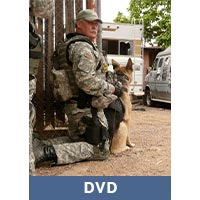
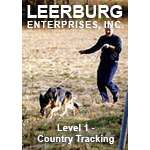


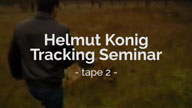

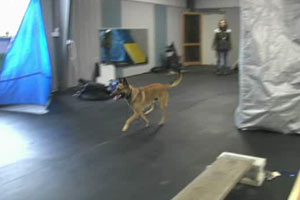
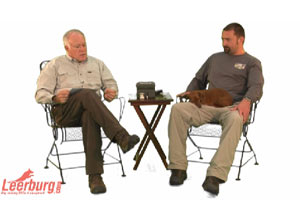
0 Comments
Ask Cindy
Sorry, adding comments is currently disabled.